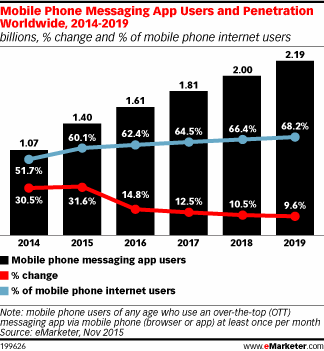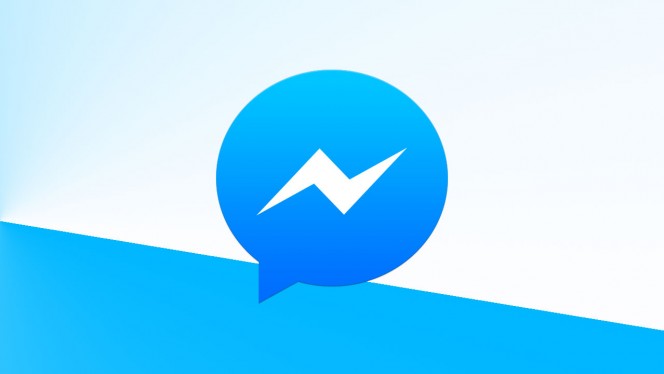Mobile messaging apps continue to be popular, with an estimated 1.4 billion people worldwide expected to use one this year. By 2018, the number of consumers using mobile messaging apps will rise to two billion, thanks to better access to mobile Internet, and cheaper rates than SMS, MMS and voice call services. That’s why an eMarketer report shows that it’s about to see a major revenue boost.
The report, titled “Mobile Messaging Apps: Global User Forecast, Leaderboard and Outlook on Monetization,” estimates that by year’s end, 75 percent of smartphone users will have some form of over-the-top (OTT) mobile messaging app for use once per month.
The chart breaks down the numbers behind mobile phone messaging app users and worldwide penetration with devices over the next few years. It’s easy to see that a growth is in place, starting with 1.07 billion app users in 2014, and quickly picking up to 1.40 this year. That number will show a significant rise, increasing to 2.19 billion by 2019, making messaging apps one of the more popular methods of communication.

Out of those users, 51.7 percent account for the numbers in 2014, but that number will slowly rise to 68.2 percent by 2019. Meanwhile, the change numbers seem to show a bit of decline, but with a growth in audience, messaging apps will continue to show effectiveness.
A side report from Juniper Research conducted in July shows that instant messages will see a tremendous spike, with more than 94 trillion sent worldwide this year. This includes all formats, however, including messaging apps, social media and MMS/SMS. Email continues to be the dominant format for communication for the time being, but instant messaging could easily take over as soon as next year, if estimates from the research firm stay on course.
Companies like Line will benefit the most from the boost in mobile messaging, with revenues expected to increase from $1.4 billion this year to $3.8 billion in 2020. It will also see a rise in users, going from 238 million for this year to 417 million. Revenues, per MAU, will also show a pick-me-up, going from $5.90 for this year to $9.10.
Others on the rise are KakaoTalk, which will see an estimated $250 million increase over the next five years, and WeChat, which is expecting an increase from $1.2 billion this year to $5.8 billion. Facebook Messenger, which currently has no reported revenue, will increase to $4.2 billion, as well as a $3.00 revenue per MAU and double the monthly active users (from 700 million to 1.4 billion).
Both WeChat and Line have benefited greatly from utilizing digital content sales in its apps, including game-related content such as sticker and emoji packs. This creates opportunity through “branded stickers” for users.
eMarketer concluded that while digital content and advertising will continue to be big revenue makers for these apps, creating a shopping hub for commerce and services, is an effective option. WeChat currently uses that business model, and is benefiting nicely.
When it comes to the popularity of messaging with mobile devices, and the potential for advertisers and partners to find programs that reach out to the millions that use them, the message is quite clear.

